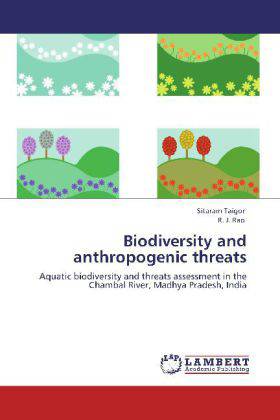
- Afhalen na 1 uur in een winkel met voorraad
- Gratis thuislevering in België vanaf € 30
- Ruim aanbod met 7 miljoen producten
- Afhalen na 1 uur in een winkel met voorraad
- Gratis thuislevering in België vanaf € 30
- Ruim aanbod met 7 miljoen producten
Zoeken
Biodiversity and anthropogenic threats
Aquatic biodiversity and threats assessment in the Chambal River, Madhya Pradesh, India
Sitaram Taigor, R. J. Rao
Paperback | Engels
€ 77,45
+ 154 punten
Omschrijving
The Chambal River is an important river in the Ganges river system. The Chambal River was declared as a National Chambal Sanctuary with an aim to provide fully protected habitat for the conservation and propagation of highly endangered crocodilian species and other aquatic animals. The study area was comprised of a 395 km of the National Chambal Sanctuary, from Pali to Chakarnagar. In the present study 46 species of fishes belonging to 16 families were observed during the course of present study and there is a general observation suggesting rapid decline in fish population due to large-scale illegal fishing. Two species of Crocodiles, the Gharial (Gavialis gangeticus) and Mugger (Crocodylus palustris) and seven species of freshwater turtles (Pangshura tentoria, Kachuga dhongoka, Batagur kachuga, Hardell thurjii, Aspideretes gangeticus, Lissemys -punctata anderoni,) were identified in the study area. The major human activities that destroyed the habitat in the Chambal River are in the form of extensive untraditional cultivation practices on the riverbanks, overgrazing, wood collection from riverside vegetation and sand mining. Sand Banks are very much useful for the aquatic animals
Specificaties
Betrokkenen
- Auteur(s):
- Uitgeverij:
Inhoud
- Aantal bladzijden:
- 132
- Taal:
- Engels
Eigenschappen
- Productcode (EAN):
- 9783847379003
- Verschijningsdatum:
- 22/04/2012
- Uitvoering:
- Paperback
- Afmetingen:
- 152 mm x 220 mm
- Gewicht:
- 204 g

Alleen bij Standaard Boekhandel
+ 154 punten op je klantenkaart van Standaard Boekhandel
Beoordelingen
We publiceren alleen reviews die voldoen aan de voorwaarden voor reviews. Bekijk onze voorwaarden voor reviews.








